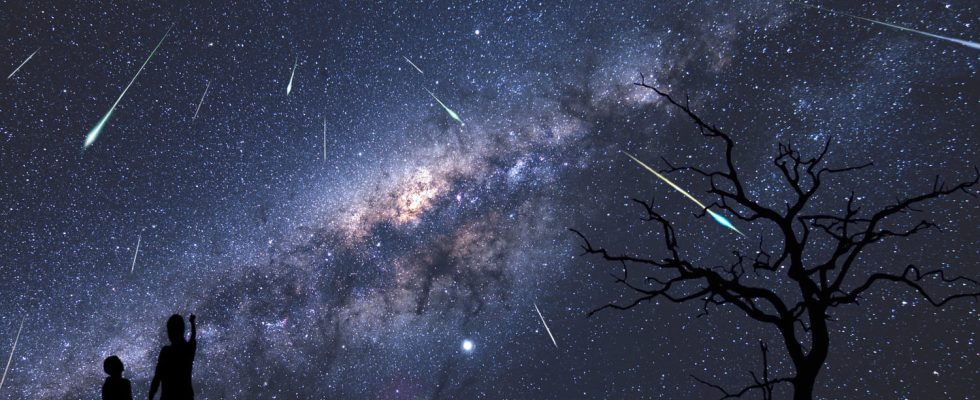SHOOTING STARS. From April 14 to 30, 2024, you can witness the Lyrids meteor shower. Here is all the information you need to know to admire the phenomenon.
Several major stellar meetings of shooting stars take place during the year 2024. This month of April, we will not miss the Lyrids phenomenon observable from April 14 to 30, 2024, and whose peak of activity takes place in on the night of April 21-22, with observers able to see approximately 18 meteors per hour under optimal viewing conditions.
The Lyrids, one of the most beautiful showers of shooting stars of the year and also one of the oldest astronomical phenomena observed 2,700 years ago, promise a magical spectacle in the sky. At what time should you observe them and how? What is this astronomical phenomenon? Find below all the essential information for good preparation and observation of shooting stars.
These are grains of dust from the comet C/1861 G1 Thatcher, discovered in 1861, which fall on the Earth’s atmosphere when the Earth passes through it. Located in the constellation of Lyra and active from April 14 to April 30, 2024, the Lyrid shooting star shower experiences, according to the International Meteor Organization, a peak on the night of April 21 to 22 each year, with a rate of 5 to 20 observable meteors per hour, launched at an average of 49 kilometers per second.
Until April 30, it is possible to observe the Lyrids. To observe them, look up towards the bright star Vega, located in the northeast. You must be awake at the start of the night before sunrise. Moon, until around 2 a.m. Indeed, the light of the Moon hinders observations and makes shooting stars invisible. If, however, you observe shooting stars after moonrise, place your back to the Moon if possible. The brightness should not hinder the observation of the most visible meteors, especially if you manage to be far from city centers or points of light. When you see a meteor, say many wishes, a well-known tradition!
No danger or need for specific equipment! Shooting stars are visible to everyone with the naked eye. No need to take out the binoculars or the telescope, given the high speed at which the fireballs pass through the Earth’s atmosphere (an average of 50 km/second). About a quarter of shooting stars leave trails visible for several seconds.
To be able to observe a shower of shooting stars optimally, the sky must not be obscured by clouds or by light pollution. To find your way more easily, you can use a mobile application like Sky Tonight available on Google Play or on theApp Storewhich will allow you to identify the constellations and their position in the sky.
